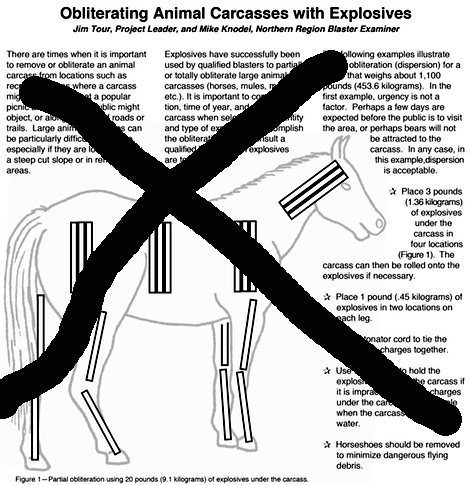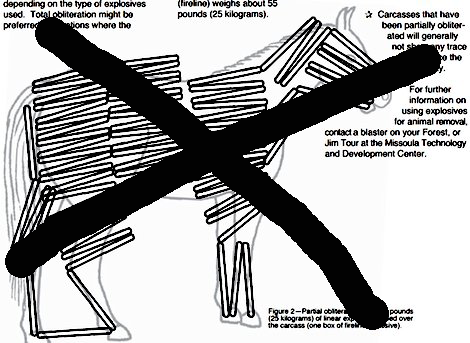Marc Abrahams's Blog, page 575
May 8, 2012
Headline of the day: “Having a wider face could save your life”
Today’s Headline of the Day arrived in a press release* from the publisher Elsevier: “Having a wider face could save your life.” It pertains to this study:
“Male facial width is associated with death by contact violence: narrow-faced males are more likely to die from contact violence,” Michael Stirrat [whose face is pictured here], Gert Stulp, Thomas V. Pollet, Evolution and Human Behavior, epub April 17, 2012. The authors, at, University of St. Andrews, UK, and at University of Groningen, explain:
“In these data, men with narrower faces were more likely to have died as a consequence of homicides involving direct physical contact than men with wider faces…. This finding suggests that wider-faced males are less likely to die from male–male physical violence.”
[The authors then make guesses to try to explain their claims.]
*BONUS: In the same tip sheet, the publisher Elsevier also lists, as its first item in the category “Science and Technology”, the headline: ”Lipstick and tipping behaviour: when red lipstick enhance waitresses tips”
BONUS: Some Men Have Heads Built for Success or for Evil

May 7, 2012
Fear of eating beans may be overblown
“People’s concerns about excessive flatulence from eating beans may be exaggerated.” That conclusion emerges loud and clear at the end of a study published recently in the Nutrition Journal.
 Donna Winham [pictured here], of Arizona State University, and Andrea Hutchins, of the University of Colorado, call their report Perceptions of Flatulence From Bean Consumption Among Adults in 3 Feeding Studies.
Donna Winham [pictured here], of Arizona State University, and Andrea Hutchins, of the University of Colorado, call their report Perceptions of Flatulence From Bean Consumption Among Adults in 3 Feeding Studies.
“Many consumers avoid eating beans because they believe legume consumption will cause excessive intestinal gas or flatulence”, they explain.
Winham and Hutchins had volunteers eat half a cup of beans daily. Every week everyone answered a questionnaire.
In the first week, fewer than half of the bean eaters reported increases in gas production. Then came a further surprise…
So begins this week’s Improbable Research column in The Guardian.
BONUS: Overblown fears about dinosaur flatulence?
BONUS: Should the new findings be confirmed, this scene from the movie Blazing Saddles might prove slightly exaggerated:

Crashes: get the story but miss the message

Dr. Connor
Not letting the truth get in the way of a good story, researchers find that newspapers in the Midwest underreported and misrepresented fatal car crashes, missing the opportunity to educate the public on an important health and safety issue. Here are the specifics:
“Newspaper Framing of Fatal Motor Vehicle Crashes in four Midwestern Cities in the United States, 1999–2000,” Susan N. Connor, Ph.D. [pictured], and Kathryn Wesolowski, Injury Prevention, Vol. 10 (3), June 2004, pp. 149–153. DOI: 10.1136/ip.2003.003376. The authors, from the Rainbow Babies and Children’s Hospital in Cleveland, OH, write:
Methods: Crash details were extracted from two years of newspaper coverage of fatal crashes in four Midwestern cities in the United States. [...]
Conclusion: Newspaper coverage did not accurately reflect real risk. Papers presented fatal crashes as dramas with a victim/villain storyline; in keeping with this narrative strategy, papers were most likely to cover stories where a driver survived to take the blame. By highlighting crashes that diverge from the norm, focusing on the assignment of blame to a single party, and failing to convey the message that preventive practices like seatbelt use increase odds for survival, newspapers removed crashes from a public health context and positioned them as individual issues.

Dr. Science and her team look at zinc and colds
Dr. Science, et al., have just published a new medical study:
“Zinc for the treatment of the common cold: a systematic review and meta-analysis of randomized controlled trials,” Michelle Science, Jennie Johnstone, Daniel E. Roth, Gordon Guyatt, Mark Loeb, Canadian Medical Association Journal, epub May 7, 2012. Dr. Science, at the Hospital for Sick Children, in Toronto, and her colleagues report:
“Zinc shortened the duration of cold symptoms in adults (mean difference –2.63, 95% CI –3.69 to –1.58), but no significant effect was seen among children (mean difference -0.26, 95% CI –0.78 to 0.25)…. The occurrence of any adverse event (risk ratio [RR] 1.24, 95% CI 1.05 to 1.46), bad taste (RR 1.65, 95% CI 1.27 to 2.16) and nausea (RR 1.64, 95% CI 1.19 to 2.27) were more common in the zinc group than in the placebo group.”
(Thanks to Ivan Oransky for bringing this to our attention.)

Brainy ambition: Connecting this and that, and readability
There’s new hope about understanding the human brain. Ian Sample reports in the Guardian:
Quest for the connectome: scientists investigate ways of mapping the brain
Researchers have a goal so ambitious it is almost unthinkable – learning how all 85bn neurons in the human brain are wired up
…
A human connectome could reveal so much more. In common with many other neuroscientists, Lichtman believes that the brain’s wiring holds the answers to some of our greatest questions. ”All the normal functions of the brain, the storage of information about the world, our memories, the way we perceive the world, the behaviours we learn, are all probably encoded in connectivity,” he said.
“Is it readable? Absolutely. There was a time when people wondered how would we ever decode the genome. That turned out to be a very simple code. The brain is complicated, but there’s no magic here. What the brain does is built into the wiring.”
Readability is thought to be important.
Eric Lander, one of the leaders in the successful effort to map and sequence the entire human genome, looked back on that project, and (at the 2003 Ig Nobel Prize Ceremony) summed it all up in seven words:
Genome: Bought the book; hard to read.

Deciding not to blow up a cow (officially)
The US Forest Service has decided to not use its standard disposal-by-detonation procedure in the celebrated case of the forlornly frozen cows, which we described recently. MSNBC/US News reports [HT Adam Orbit, again]:
Solution found for dead cows stuck in mountain cabin: saws
What to do with the carcasses of six cows inside a U.S. Forest Service cabin at 11,000 feet elevation? For the last month, officials mulled burning or blowing them, and the cabin, up; or hauling them out via cart or helicopter. But on Thursday, a crew set out with a solution: saw off the pieces and then dispose of them in nearby woods in Colorado’s White River National Forest, outside of Aspen.
The area along aptly named Conundrum Creek happens to also be within a federal wilderness area, which means no motorized vehicles to shuttle the team. Instead, the crew left Thursday morning for the 8.5-mile hike up to the cabin, White River National Forest spokesman Bill Kight told msnbc.com.
That disposal method — the one that will not used in this case — is specified in the document ”Obliterating Animal Carcasses with Explosives”:



May 6, 2012
Putting a Price on Prayer
• Some people might feel happier if they get their hands on some more money.
• Some people might feel happier if they use their hands to pray.
Leading some to the question : is it feasible to equate the two? In other words, is it possible to put a price on prayer?
 Timothy T. Brown, Ph.D. (Assistant Adjunct Professor, Health Policy & Management Associate Director for Research, at the Berkeley Center for Health Technology) has entertained just such an idea. And has a paper scheduled to appear in the journal Applied Economics, Volume 45, Issue 15, 2013. The article : A Monetary Valuation of Individual Religious Behavior: The Case of Prayer is currently available (to non-subscribers) for $36.00.
Timothy T. Brown, Ph.D. (Assistant Adjunct Professor, Health Policy & Management Associate Director for Research, at the Berkeley Center for Health Technology) has entertained just such an idea. And has a paper scheduled to appear in the journal Applied Economics, Volume 45, Issue 15, 2013. The article : A Monetary Valuation of Individual Religious Behavior: The Case of Prayer is currently available (to non-subscribers) for $36.00.
It found that :
“Praying at the frequency of the national mean of 8.1 prayer sessions weekly is valued at $53,055 (2004 dollars) per annum.”
Those readers who don’t wish to part with $36, but who would nonetheless like to further explore the idea, can turn instead to a substantially similar (though subtly different) working paper, by the same author, entitled :A Monetary Valuation of Individual Religious Behavior: The Case of Prayer which found that :
“Praying at the frequency of the national mean of 8.1 prayer sessions weekly is valued at $89,100 (2004 dollars) per annum.”
Put another way :
“… the amount of happiness that an extra prayer session per week is worth is the same amount of happiness that $11,000 provides. At the sample mean of 8.1 prayers per week, individuals are 9% more happy relative to those who do not pray at all which is valued at $89,100 per annum.”

Richard Feynman and the word “muggles”
The word “muggles”, so prominently used in the Harry Potter novels, may have danced through the speech of physicist Richard Feynman. Investigator David Kessler writes:
In this youtube video [below], Feynman is discussing how scientists develop and test theories. At 05:10 he says this:
“I must also point out to you that you cannot prove a ‘vague’ theory wrong. If the guess that you make is poorly expressed and rather vague and the method that you use for figuring out the consequences is rather a little vague, you’re not sure and you decide, ‘I think everything is because, it’s all due to muggles and muggles do this and that more or less’ so I can sort of explain how this works then you see that that theory is good because it can’t be proved wrong. If the process of computing the consequences is indefinite then with a little skill any experimental result can be made to look like an expected consequence.”
I had no idea muggles were the “widgets” of theoretical physics.
Feynman pronounced the word differently than most modern muggles pronounce it — he seems to be emphasizing that it’s a nonsense word — and it’s not clear how he spelled it, if he ever spelled it (transcriptions we have seen simply eliminate the word).
BONUS: Some of the many musings, by others, about the origin of the word “muggles”
BONUS: An Abstruse Goose cartoon about wizards and mathematicians. (HT Bob O’Hara)

May 5, 2012
Information Hiding Conference Is Hiding Information
 The Proceedings of the 13th International Information Hiding Conference (Prague, Czech Republic, May 2011) are available online for all to see. Much of the fine content, however, is hidden . . .
The Proceedings of the 13th International Information Hiding Conference (Prague, Czech Republic, May 2011) are available online for all to see. Much of the fine content, however, is hidden . . .
It will be revealed (in largely unreadable form) if you click the orange text reading ‘Information Hiding 13th International Conference, IH 2011, Prague, Czech Republic, May 18-20, 2011, Revised Selected Papers’ HERE (use the scrollbars to view several hundred pages of obscurantised blur) .
Note : The 14th Information Hiding Conference will be held in Berkeley, California, May 15-18, 2012.

Grimaces of mice and men (and rats)
Scientists are interested in whether mice’s facial expressions can be used as an index of pain. To test the idea, they compared the Mouse Grimace Scale (pictured below) with more traditional behavioral measures in examining mice’s levels of discomfort after having surgery on their manhood—er, mousehood.
“The Assessment of Post-Vasectomy Pain in Mice Using Behaviour and the Mouse Grimace Scale,” Matthew C. Leach, Kristel Klaus, Amy L. Miller, Maud Scotto di Perrotolo, Susana G. Sotocinal, and Paul A. Flecknell, PLoS ONE, Vol. 7(4), e35656. DOI:10.1371/journal.pone.0035656. The researchers from Newcastle University and McGill University report:
“This study compared changes in behaviour assessed using both an automated system (‘HomeCageScan’) and using manual analysis with changes in facial expressions assessed using the Mouse Grimace Scale (MGS). Mice [...] were assessed before and after surgery (scrotal approach vasectomy) and either received saline, meloxicam or bupivacaine. Both the MGS and manual scoring of pain behaviours identified clear differences between the pre and post surgery periods and between those animals receiving analgesia [...] or saline post-operatively. Both of these assessments were highly correlated with those showing high MGS scores also exhibiting high frequencies of pain behaviours.”
(HT Io9)
BONUS: Compare the Rat Grimace Scale.
BONUS: Yogurt and mouse ball circumference

Marc Abrahams's Blog
- Marc Abrahams's profile
- 14 followers
























